
Back-to-school 2025: which educational microscope to introduce your children to science?
Introduction: discovering the invisible world at the start of the school year
\nThe new school year is the perfect opportunity to spark children's scientific curiosity. Giving or using a microscope in class or at home opens a window into the incredibly small and stimulates the spirit of observation. But with the variety of models, how do you choose the educational microscope best suited to the child's age, needs, and level? This guide helps you make the right choice for a 2025 back-to-school season centered on discovery and learning.
\n\nWhat are the different types of microscopes for children?
\nBefore buying, it is essential to understand the main families of microscopes suited for educational use:
\n- \n
- \nThe binocular magnifier or stereo microscope : Ideal for young children (from about 5-6 years old), it allows relief viewing of solid objects (leaves, insects, small minerals). Its low magnification (10x to 40x) is perfect for beginners, as it does not require complex preparation. \n
- \nThe biological optical microscope : More classic, it offers higher magnifications (40x to 1000x) and allows observing cells, microorganisms, or tissues on a slide. It is generally suitable from about 8–10 years old or for use in middle school. Observation here requires preparing or using pre-prepared slides. \n
- \nThe digital microscope : Modern and very playful, it connects to a computer or tablet. It allows viewing and recording observations. Often versatile, it can offer different magnification ranges and appeal to tech-loving children. \n
Key criteria for choosing well
\nYour choice will depend on several criteria:
\n- \n
- \nThe child’s age : For 5-8 years old, prefer the binocular magnifier, easier to use and robust. From 8-10 years, a biological microscope opens up new possibilities. \n
- \nDurability : A microscope intended for educational use should be solid, stable, and easy to handle. Metal models are more durable than plastic ones. \n
- \nOptical quality : Check the clarity of the lenses and the presence of LED lighting, essential for precise observation. \n
- \nIncluded accessories : Some brands offer complete kits with slides, tweezers, prepared slides, storage boxes, or educational manuals. \n
- \nBudget : There are microscopes for children from 40-60 €, but for a more evolutive and durable device, plan a budget of 80 to 200 € depending on features. \n
Educational accessories: the essentials for a good start
\nA microscope without accessories quickly loses its appeal. Here are the essentials:
\n- \n
- \nPre-prepared slides and specimens : Perfect for quickly discovering the wonders of the microscopic world without complex handling. \n
- \nSlides and blank coverslips : To create your own preparations, for example a drop of pond water or a leaf fragment. \n
- \nBuilt-in LED illumination : Prefer a model with adjustable light to adapt to all sample types. \n
- \nManipulation accessories : Tweezers, pipettes, needles, Petri dishes, etc., help with sample preparation. \n
- \nManuals or observation guides : They provide ideas for experiments and guide children in their early explorations. \n
Some models recommended for the 2025 back-to-school season
\n- \n
- \nBresser Erudit DLX 40-1000x : A high-end biological microscope with LED illumination and a wide magnification range. Ideal for advanced cellular observation at home or in class, delivered with accessories. Supplier: BRESSER. Usual price: 273,90 €. \n
- \nBresser Erudit Basic Bino 40x-400x : Binocular optical microscope perfect for nature exploration and initial microbial analyses. Suitable for middle school and high school students. Supplier: BRESSER. Usual price: 258,90 €. \n
- \nSVBONY SM201 Laboratory Binocular Microscope : A robust and versatile model for nature exploration and introduction to laboratory techniques. Supplier: SVBONY. Usual price: 217,00 €. \n
- \nBiolux NV 20x-1280x Microscope with USB HD Camera : An evolutive microscope for family or school use, with HD camera to capture photos and videos. Supplier: BRESSER. Usual price: 168,90 €. \n
Usage and maintenance tips in an educational context
\nTo ensure a rewarding experience, here are some practical tips:
\n- \n
- \nSupport the discovery : Encourage the child to describe their observations, to draw or photograph what they see. Propose exploration themes appropriate to their age. \n
- \nRespect the operating rules : Handle the lenses with care, keep hands clean, and never touch the optics with your fingers. \n
- \nClean regularly : Use a soft cloth for the lenses and avoid water on electrical parts. \n
- \nStore the microscope away from dust : Use the provided cover or a dedicated box after each use. \n
- \nVary the observation subjects : Water, plants, fabrics, insects… Diversity stimulates interest and develops scientific thinking. \n
Conclusion: an investment in your children's scientific future
\nChoosing an educational microscope for the 2025 back-to-school season is to offer your child or your students a tool for awakening, experimentation and understanding of the world. Taking into account age, durability, optical quality and accessories, you guarantee hours of exciting and formative exploration. Science is learned by observing, so, ready for the big adventure of the tiny world?

 All
All
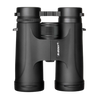 Jumelles
Jumelles
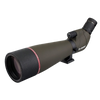 Spotting scope
Spotting scope
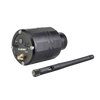 All
All
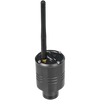 Classic cameras
Classic cameras
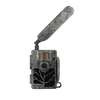 Camera Trap
Camera Trap
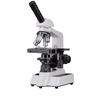 Tout
Tout
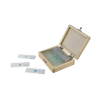 Accessories and Cameras
Accessories and Cameras
 All
All
 Knives
Knives
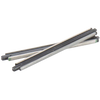 sharpeners
sharpeners
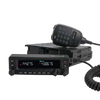 Radios
Radios
 Talkie Walkie,
Talkie Walkie,
 Accessories
Accessories